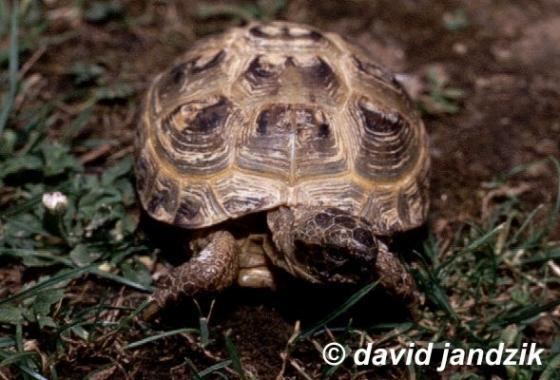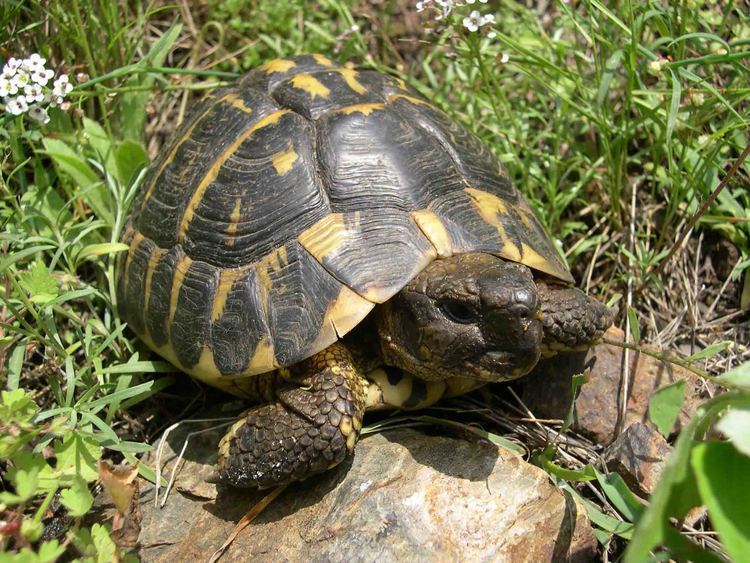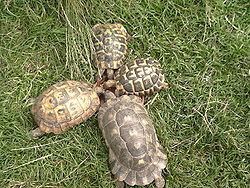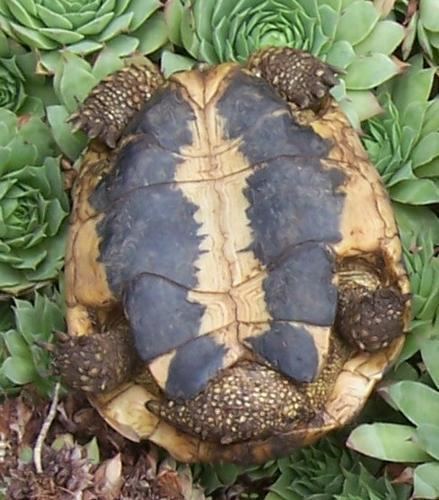Family Testudinidae Higher classification Tortoise Rank Genus | Scientific name Testudo Phylum Chordata Order Turtle | |
 | ||
Lower classifications Hermann's tortoise, Spur‑thighed tortoise, Russian tortoise, Marginated tortoise, Kleinmann's tortoise | ||
Testudo is a genus of tortoises found in North Africa, western Asia, and Europe. Several species are under threat in the wild, mainly from habitat destruction.

They are small tortoises, ranging in length from 7.0 to 35 cm and in weight from 0.7 to 7.0 kg.
Systematics
The systematics and taxonomy of Testudo is notoriously problematic. Highfield and Martin commented:

Synonymies on Testudo are notoriously difficult to compile with any degree of accuracy. The status of species referred have undergone a great many changes, each change introducing an additional level of complexity and making bibliographic research on the taxa extremely difficult. Most early and not a few later checklists contain a very high proportion of entirely spurious entries, and a considerable number of described species are now considered invalid – either because they are homonyms, non-binomial or for some other reason.

Since then, DNA sequence data have increasingly been used in systematics, but in Testudines (turtles and tortoises), its usefulness is limited: In some of these, at least mtDNA is known to evolve more slowly in these than in most other animals. Paleobiogeographical considerations suggest the rate of evolution of the mitochondrial 12S rRNA gene is 1.0-1.6% per million years for the last dozen million years or so in the present genus and ntDNA evolution rate has been shown to vary strongly even between different population of T. hermanni; this restricts sequence choice for molecular systematics and makes the use of molecular clocks questionable.
Conventionally, five species are placed here:


The first two are more distinct and ancient lineages than the closely related latter three species. Arguably, T. horsfieldii belongs in a new genus (Agrionemys) on the basis of the shape of its carapace and plastron, and its distinctness is supported by DNA sequence analysis. Likewise, a separate genus Eurotestudo has recently been proposed for T. hermanni; these three lineages were distinct by the Late Miocene as evidenced by the fossil record. Whether these splits will eventually be accepted remains to be seen. The genus Chersus has been proposed to unite the Egyptian and marginated tortoises which have certain DNA sequence similarities, but their ranges are (and apparently always were) separated by their closest relative T. graeca and the open sea and thus, chance convergent haplotype sorting would better explain the biogeographical discrepancy.
Conversely, the Greek tortoise is widespread and highly diverse. In this and other species, a high number of subspecies has been described, but not all generally accepted, and several (such as the "Negev tortoise" and the "dwarf marginated tortoise") are now considered to be local morphs. Some, such as the Tunisian spur-thighed tortoise, have even been separated as a separate genus Furculachelys, but this is not supported by more recent studies. However, the "Greek" tortoise likely will be split into two or more species in the near future.
